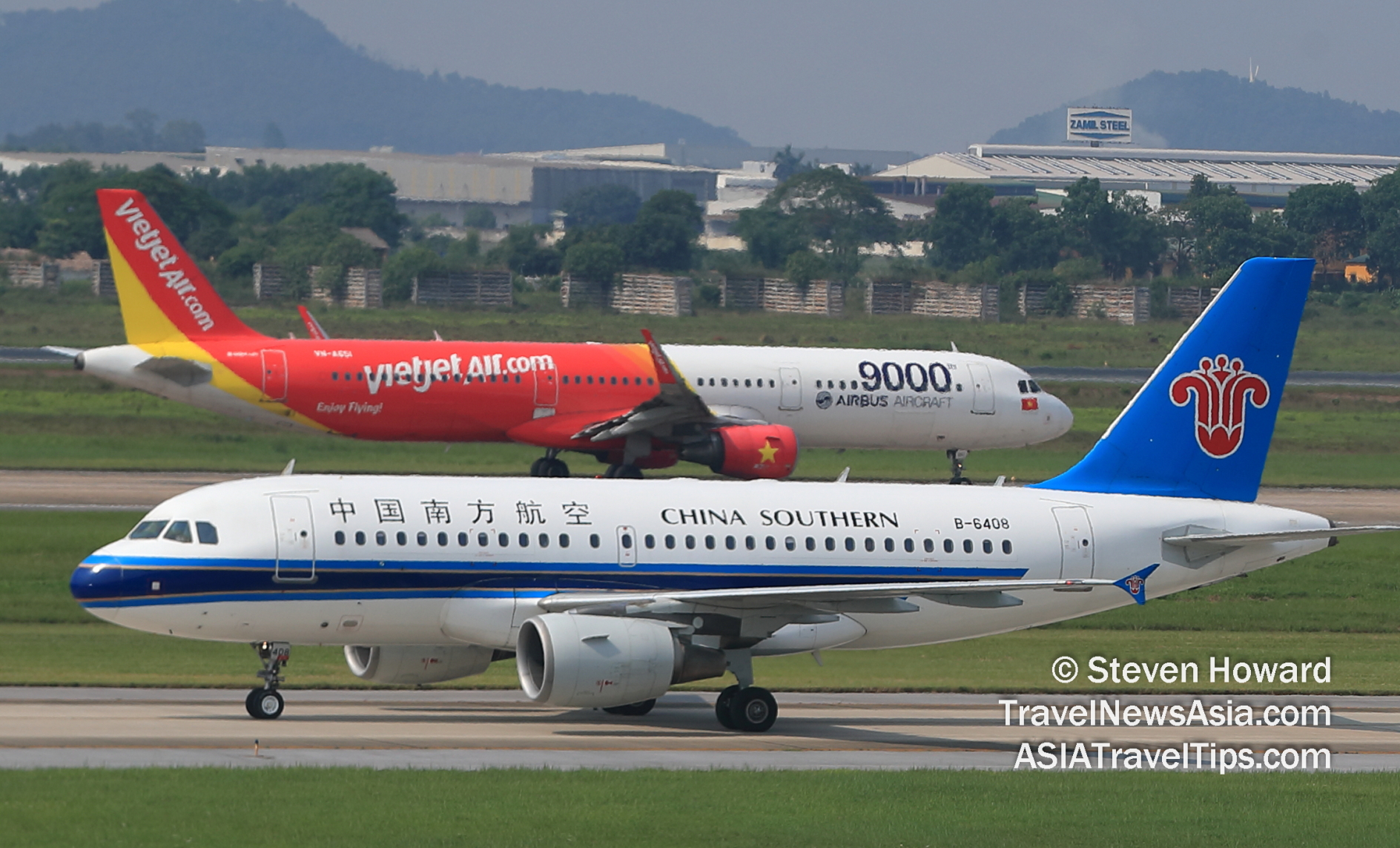|
(07 Apr 2022, 12:13 +07)
According to the latest data from IATA, air
travel experienced a strong rebound in February 2022 when compared
to January 2022, as Omicron-related impacts moderated outside of
Asia.
The war in Ukraine, which began on 24 February, did not have
a major impact on traffic levels.
Total traffic in February 2022, measured in
revenue passenger kilometers (RPKs), was up 115.9% compared to
February 2021, an improvement from January 2022, which was up
83.1% compared to January 2021. Compared to February 2019,
however, traffic was down 45.5%.
February 2022 domestic traffic was up 60.7%
compared to the year-ago period, building on a 42.6% increase in
January 2022 compared to January 2021. Domestic traffic in
February was 21.8% below the volumes of February 2019.

Aircraft at Noi Bai Int. Airport (HAN) in Hanoi, Vietnam. Picture by Steven Howard of TravelNewsAsia.com
International RPKs rose 256.8% versus February
2021, improved from a 165.5% year-on-year increase in January 2022
versus the year-earlier period. All regions improved their
performance compared to the prior month. February 2022
international RPKs were down 59.6% compared to the same month in
2019.
“The recovery in air travel is gathering steam as
governments in many parts of the world lift travel restrictions.
States that persist in attempting to lock-out the disease, rather
than managing it, as we do with other diseases, risk missing out
on the enormous economic and societal benefits that a restoration
of international connectivity will bring,” said Willie Walsh,
IATA’s Director General.
Asia-Pacific airlines reported a rise in February
traffic of 144.4% compared to February 2021, up on the
125.8% gain registered in January 2022 versus January 2021.
Capacity rose 60.8% and the load factor was up 16.1 percentage
points to 47%, the lowest among regions.
European carriers saw their February traffic rise
380.6% versus February 2021, improved over the 224.3% increase in
January 2022 versus the same month in 2021. Capacity rose 174.8%,
and load factor climbed 30.3 percentage points to 70.9%.
Middle Eastern airlines’ traffic rose 215.3% in
February compared to February 2021, well up compared to the 145%
increase in January 2022, versus the same month in 2021. February
capacity rose 89.5% versus the year-ago period, and load factor
climbed 25.8 percentage points to 64.7%.
North American carriers experienced a 236.7%
traffic rise in February versus the 2021 period, significantly
increased compared to the 149.0% rise in January 2022 over January
2021. Capacity rose 91.7%, and load factor climbed 27.4 percentage
points to 63.6%.
Latin American airlines’ February traffic rose
242.7% compared to the same month in 2021, well up over the 155.2%
rise in January 2022 compared to January 2021. February capacity
rose 146.3% and load factor increased 21.7 percentage points to
77%, which was the highest load factor among the regions for the
17th consecutive month.
African airlines had a 69.5% rise in February RPKs
versus a year ago, a large improvement compared to the 20.5%
year-on-year increase recorded in January 2022 compared to the
same month in 2021. February 2022 capacity was up 34.7% and load
factor climbed 12.9 percentage points to 63%.
Domestic Passenger Markets
Brazil’s domestic traffic was up 32.5% in
February, compared to February 2021, a slowdown compared
to the 35.5% year-on-year growth recorded in January.
US domestic RPKs rose 112.5% year-on-year in
February, an improvement compared to the 98.4% rise in January
versus the prior year.
2022 vs 2019
The accelerated growth recorded in February 2022
compared to a year ago is helping passenger demand catch-up to
2019 levels. Total RPKs in February were down 45.5% compared to
February 2019, well ahead of the 49.6% decline recorded in January
versus the same month in 2019. The domestic recovery continues to
outpace that of international markets.
“As the long-awaited recovery in air travel
accelerates, it is important that our infrastructure providers are
prepared for a huge increase in passenger numbers in the coming
months. We are already seeing reports of unacceptably long lines
at some airports owing to the growing number of travelers. And
that is even before the surge of Easter holiday travel in many
markets next week. The peak Northern summer travel season will be
critical for jobs throughout the travel and tourism value chain.
Now is the time to prepare. Governments can help by ensuring that
border positions are staffed adequately and that background
security checks for new staff are managed as efficiently as
possible,” said Walsh.
See also:
Exclusive Travel Industry Interview with Kurt Ekert, President of
Sabre.
Published on TravelNewsAsia.com at:
https://www.travelnewsasia.com/news22/74-AirTravel.shtml
|
Headlines: |
|
|
